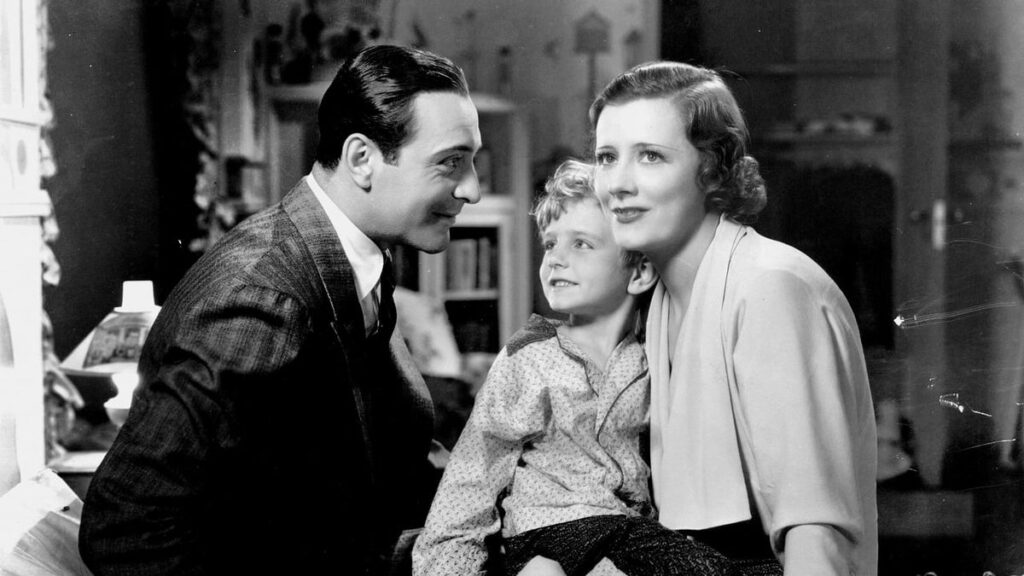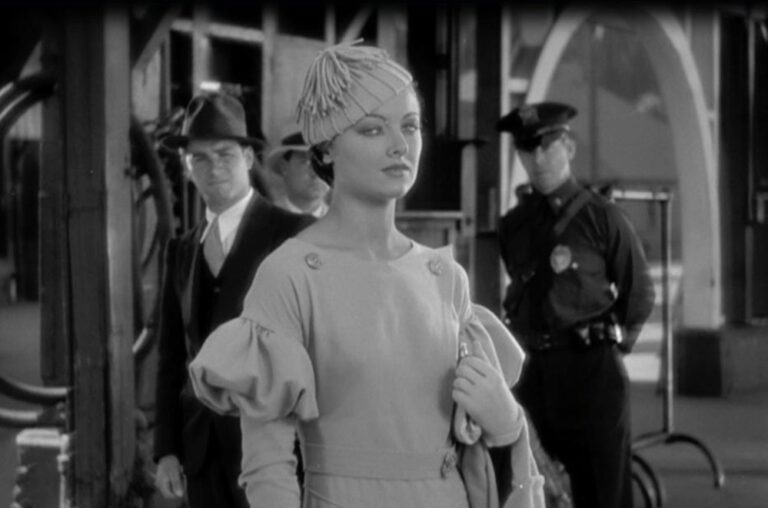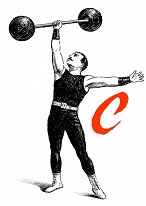Based on the novel by Tiffany Thayer, produced by David O. Selznick, and directed by George Archaunbaud, ‘Thirteen Women’ was released in 1932 as a ‘pre-code Hollywood’ movie. Films during this period—from around 1927 when the first ‘talkies’ (films with sound) were introduced, to 1934—generally had more freedom to explore and tackle themes of a more controversial nature such as racism, sexuality, and violence, until the Hollywood censorship laws were introduced in 1934. And it’s important to bear this in mind when watching “Thirteen Woman,” or in fact any early horror. It’s so easy to compare them to the modern, brutal, gory slashers that leave little to the imagination. But to understand the impact they’ve had on the genre, we must view them through a cultural and social lens of their time.
Having Villain and Motive
The film stars Ursula Georgi (Myrna Loy). She’s a charismatic ‘half-Hindu’ woman who enacts revenge on a group of sorority women who excluded her at school due to her mixed-race heritage. Picking them off one by one, Ursula sends each woman a horoscope predicting their death, under the guise of the famous clairvoyant Swami Yogadachi (C. Henry Gordon), whom she has cast under her spell. Taking matters into her own hands and substituting her own predictions for the Swami’s, she uses the power of suggestion to drive Hazel Cousins (Peg Entwistle) to stab her husband, trapeze artist June Raskob (Mary Duncan) to drop her sister during their circus act and compels the Swami to plummet to his death (this is a woman who is not messing about). The murders are mostly alluded to. We don’t see the brutal kills as typical of the slasher genre; however, their nature are dark and grisly enough to still make us squirm.
For a slasher to be effective, there are two things that need to work: the villain and the motive. And this is what makes “Thirteen Women” a success. Released only a year after “Dracula” and “Frankenstein” (both 1931), “Thirteen Women” paved the way for a new horror subset. It focused on the ‘Human Being as the Monster,’ drawing upon ‘paranoid’ horror that didn’t fully emerge until the 1960s. Loy plays this role extremely well, blurring the line between Monster and Human in a more sophisticated than modern slashers. Whilst most slashers feature male protagonists as the killer—unsurprising, perhaps, if we think about how slashers in the ’70s and ’80s encapsulate the idea of the real life serial killer, who was markedly male—”Thirteen Women” instead showcases a powerful femme fatale as its sole villain.
Slasher Killers are Often Outcasts
Further, as with most 1970s and 1980s slashers, the murderer in “Thirteen Women” is both inhuman and superhuman. She incorporates a sense of otherness that makes the character so unnerving. What makes these ‘monsters’ truly terrifying, and Ursula in particular, is that they outwardly appear so normal. With charm and otherworldliness, they’re enabled to dupe those around them, reinforcing the horrifying idea that it can happen to any of us. And Ursula’s character is a perfect blend of both the inhuman human and the supernatural monster. On the one hand, she reminds me of the very human Hannibal Lecter, who himself exhibits quite a feminine presence. Her serene, unnerving calmness and penetrating gaze—combined with an overtly sexual, strong masculine presence—could render her a modern Dracula.

However, whilst there is undeniably something supernatural and mystic about Ursula, what I find most interesting is she’s is only a monster because she has been made one. And this, I must emphasise, is a key theme of many slasher films. These killers are often outcasts, banished from society due to their distinct differences. And for this, they wreak vengeance on those who they feel have wronged them—becoming, ironically, the very monsters they have been claimed to be. And “Thirteen Women” takes this a step further. It uses Ursula’s mixed race and unique sense of ‘otherness’ as being what makes her—in the eyes of those around her—‘monstrous.’ She is a strong, sultry, unmarried, and (I assume) childless woman, described as a ‘half-breed type,’ a ‘half-Hindu,’ and a ‘half-Javanese or something’—feared and judged by society because of her inability to fit in amongst her peers.
Of Men and Monsters: who is Responsible?
Yet, what I love most about Ursula’s character is how she uses this ‘otherness’ as her method of revenge. She draws and preys upon the ignorance of those who, as she sees it, have cast her out. Preying on Anglo-Saxon occult superstitions, she dupes those around her into doing exactly what they don’t want to do. They bring about their own deaths—and of those around them—because of their fear and belief in supernatural predestination.

And this is another interesting element of “Thirteen Women”—whilst in other slasher films we physically see the murders taking place, Ursula does not directly murder her victims. Instead, they all fall due to their fears of the other, or the unknown. They also fall victim to their own depravity, a collective fear that surges through the group like a contagion. They themselves choose to act out the fateful horoscopes, or should I call them, ‘horrorscopes’ (thank you, thank you very much) they believe to be sent by clairvoyant Swami Yogadachi, in turn bringing about their own downfall (is anyone else getting “Final Destination” and Harry Potter vibes here, or is it just me?).
And it leaves one to question: who is truly responsible here? Do we place any responsibility on the women who forced Ursula to become an outcast and wreak her revenge? Can Ursula be held responsible for her actions, despite not having physically murdered anyone? Or should she be judged and held accountable for choosing to become the outcast, the ‘monster’ she was perceived by these thirteen women to be?
For the Golden Age of Slashers Fanatics
And herein lies the real charm of the film. It’s short, sweet, and not remotely gory or horrific in the way that we might understand slashers to be. But it makes for excellent discussion and debate. In my opinion, it’s been overlooked as a precursor to the slasher genre, falling behind many others that supersede it. I truly commend ‘Thirteen Women’ on its ability to blend so many different elements of horror whilst touching upon themes and tropes further explored and depicted throughout the slasher Golden Age. It forms well-crafted revenge plot with a devilish and divine femme fatale at its helm.
So, if you’re a slasher fanatic like me, I recommend you give it a watch. If nothing else, you’ll at least be entertained.



